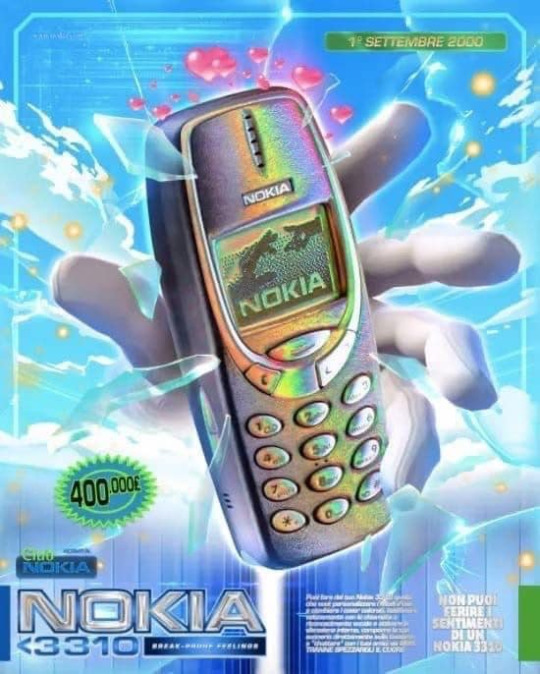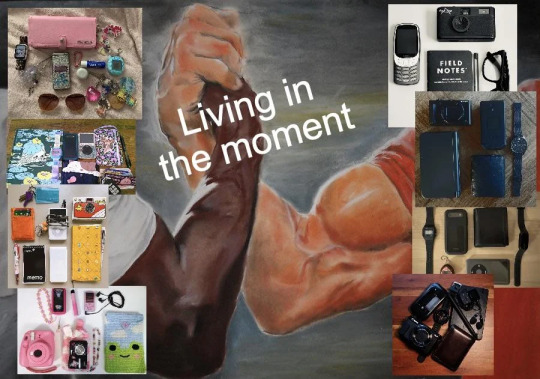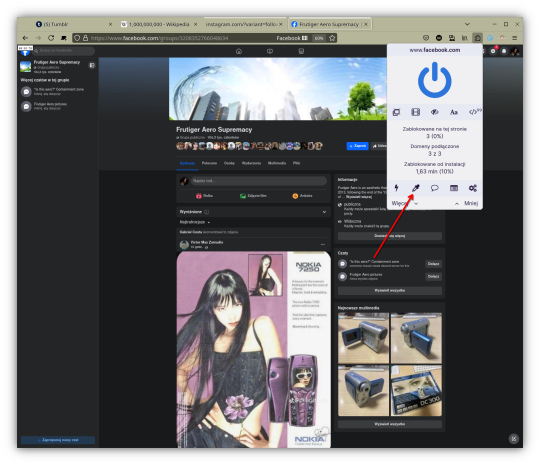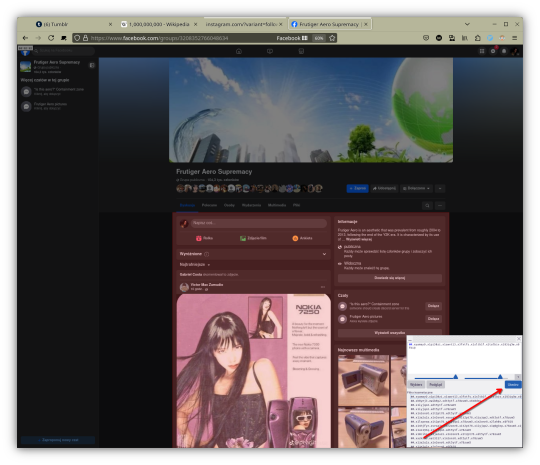#Emerging E-Learning Technology
Explore tagged Tumblr posts
Text
International Businesses: Navigate Global Shipping with Arihant's Expertise

The future of courier services is here! Explore key trends like AI-driven logistics, drone delivery, sustainability, and hyper-personalization shaping package delivery in 2025 and beyond. Learn how businesses can adapt and thrive in this tech-driven world.
#future of courier services#courier services 2025#delivery services#package delivery#logistics#automation#robotics#drones#AI#artificial intelligence#machine learning#sustainability#green logistics#electric vehicles#last-mile delivery#blockchain#internet of things (IoT)#augmented reality (AR)#same-day delivery#predictive analytics#supply chain#e-commerce delivery#delivery trends#courier industry trends#logistics trends#emerging technologies#delivery innovation#shipping#global shipping#international shipping
0 notes
Text
The Future of E-Learning in 2025: Emerging Trends and Technologies

As we move further into the digital age, e-learning has evolved into a powerful tool for education and professional development. The impact of technology on learning is undeniable, and the coming years will see significant advancements in how we access and absorb knowledge. This blog explores the future of e-learning, the emerging trends shaping the industry, and how new e-learning technologies will change the landscape of education by 2025.
Let's see how we can use the future of e-learning to our advantage:
1. The Evolution of E-Learning
2. Learning Trends 2025
3. The Future of Work
Let’s go over each one in detail below.
The Evolution of E-Learning:
Over the past decade, e-learning has grown from simple online courses to comprehensive, interactive platforms that offer immersive learning experiences. Initially, e-learning involved video lessons and quizzes, but it has rapidly evolved with the help of new technologies. Now, learning platforms offer live sessions, collaborative projects, gamified modules, and AI-driven personalization, making the learning experience far more engaging.
The future scope of e-learning is even more promising. With continuous technological innovations, such as augmented reality (AR), virtual reality (VR), and artificial intelligence (AI), e-learning is expected to provide a more dynamic and flexible approach to education. These technologies are bridging the gap between traditional classroom experiences and online learning, making e-learning not just a convenient option but also a powerful one.
Learning Trends 2025: What to Expect
As we approach 2025, several learning trends are expected to emerge. Some of the main ones are:
Personalized Learning Paths: One of the key emerging trends in e-learning is personalization. AI and machine learning will analyze learners' behavior and tailor courses to their individual learning needs. This allows each student to progress at their own pace and focus on areas where they need improvement. Personalized learning not only enhances engagement but also improves knowledge retention.
Microlearning: Short, focused learning sessions will continue to gain popularity. Microlearning allows learners to consume small chunks of information quickly and effectively. This trend is particularly useful in the fast-paced world of work, where employees need to acquire new skills quickly without spending hours on long courses.
Gamification: Integrating game-like elements such as points, badges, and leaderboards into e-learning platforms will continue to engage learners. Gamification has been proven to make learning more enjoyable and to motivate participants to complete courses, making it an essential trend for the future.
Mobile Learning: As mobile devices become more powerful, mobile learning will dominate the e-learning space. Learners will expect to access training materials on-the-go, anytime and anywhere. Learning management systems (LMS) will need to prioritize mobile-first designs to ensure seamless experiences across devices.
Social Learning: Collaboration will be at the heart of future e-learning platforms. Peer-to-peer interactions, group projects, and discussion forums will become more common, allowing learners to share knowledge and experiences. This aligns with the future world of work, where teamwork and collaboration are essential skills.
The Future of Work:
The future of work will be shaped by digital transformation, and e-learning will play a pivotal role in preparing the workforce for these changes. With industries evolving and new technologies emerging, employees need continuous upskilling and reskilling to stay competitive. E-learning offers a flexible, cost-effective way for organizations to train their staff and equip them with the latest skills.
The growing need for remote work has also emphasized the importance of digital learning solutions. As more businesses embrace the digital workplace, e-learning will become the go-to method for workforce development. Whether it's onboarding new employees or offering professional development opportunities, e-learning provides businesses with the tools they need to stay ahead.
Conclusion:
The future of e-learning is full of possibilities, driven by emerging trends and cutting-edge technologies. With the rise of Artificial Intelligence, Virtual Reality, and mobile learning, the way we access and engage with education is set to become more interactive, personalized, and accessible. By 2025, e-learning will likely be the dominant form of education, offering learners a rich and flexible experience that meets the demands of the evolving workforce.
Tudip Learning is a new venture of Tudip Technologies that helps learners uncover their natural interests with our foundation courses.
If you're interested in learning more about the AI/ML courses offered by Tudip Learning please visit: https://tudiplearning.com/course/basics-of-ai-and-ml/.
#the future of e-learning#learning trends 2025#the evolution of e-learning and new trends#the future world of work#Emerging trends in e-learning#E-learning technologies#Future scope of e-learning management system
1 note
·
View note
Text
"Canadian scientists have developed a blood test and portable device that can determine the onset of sepsis faster and more accurately than existing methods.
Published today [May 27, 2025] in Nature Communications, the test is more than 90 per cent accurate at identifying those at high risk of developing sepsis and represents a major milestone in the way doctors will evaluate and treat sepsis.
“Sepsis accounts for roughly 20 per cent of all global deaths,” said lead author Dr. Claudia dos Santos, a critical care physician and scientist at St. Michael’s Hospital. “Our test could be a powerful game changer, allowing physicians to quickly identify and treat patients before they begin to rapidly deteriorate.”
Sepsis is the body’s extreme reaction to an infection, causing the immune system to start attacking one’s own organs and tissues. It can lead to organ failure and death if not treated quickly. Predicting sepsis is difficult: early symptoms are non-specific, and current tests can take up to 18 hours and require specialized labs. This delay before treatment increases the chance of death by nearly eight per cent per hour.
[Note: The up to 18 hour testing window for sepsis is a huge cause of sepsis-related mortality, because septic shock can kill in as little as 12 hours, long before the tests are even done.]
[Analytical] AI helps predict sepsis
Examining blood samples from more than 3,000 hospital patients with suspected sepsis, researchers from UBC and Sepset, a UBC spin-off biotechnology company, used machine learning to identify a six-gene expression signature “Sepset” that predicted sepsis nine times out of 10, and well before a formal diagnosis. With 248 additional blood samples using RT-PCR, (Reverse Transcription Polymerase Chain Reaction), a common hospital laboratory technique, the test was 94 per cent accurate in detecting early-stage sepsis in patients whose condition was about to worsen.
“This demonstrates the immense value of AI in analyzing extremely complex data to identify the important genes for predicting sepsis and writing an algorithm that predicts sepsis risk with high accuracy,” said co-author Dr. Bob Hancock, UBC professor of microbiology and immunology and CEO of Sepset.
Bringing the test to point of care
To bring the test closer to the bedside, the National Research Council of Canada (NRC) developed a portable device they called PowerBlade that uses a drop of blood and an automated sequence of steps to efficiently detect sepsis. Tested with 30 patients, the device was 92 per cent accurate in identifying patients at high risk of sepsis and 89 per cent accurate in ruling out those not at risk.
“PowerBlade delivered results in under three hours. Such a device can make treatment possible wherever a patient may be, including in the emergency room or remote health care units,” said Dr. Hancock.
“By combining cutting-edge microfluidic research with interdisciplinary collaboration across engineering, biology, and medicine, the Centre for Research and Applications in Fluidic Technologies (CRAFT) enables rapid, portable, and accessible testing solutions,” said co-author Dr. Teodor Veres, of the NRC’s Medical Devices Research Centre and CRAFT co-director. CRAFT, a joint venture between the University of Toronto, Unity Health Toronto and the NRC, accelerates the development of innovative devices that can bring high-quality diagnostics to the point of care.
Dr. Hancock’s team, including UBC research associate and co-author Dr. Evan Haney, has also started commercial development of the Sepset signature. “These tests detect the early warnings of sepsis, allowing physicians to act quickly to treat the patient, rather than waiting until the damage is done,” said Dr. Haney."
-via University of British Columbia, May 27, 2025
#public health#medical news#sepsis#cw death#healthcare#medicine#medical care#ai#canada#north america#artificial intelligence#genetics#good news#hope
786 notes
·
View notes
Text
Pick a Card: Career Guidance




Top Left to Right--> Pile 1, Pile 2
Bottom Left to Right--> Pile 3. Pile 4
If You Liked This Reading Sign up to TheObsidianPages777 Newsletter
+Free E-Guides on New Moon Manifestation and Gem Stone for Life Path
================================================================================================
Pile 1
Current Situation: The Chariot
You are determined and focused on your career goals, moving forward with purpose and direction. There's a sense of control and determination driving your actions.
Challenges: Five of Wands
You may be facing competition or conflict in your workplace. There could be differing opinions and struggles that make it hard to progress smoothly.
Advice: Strength
Rely on your inner strength and patience to navigate through challenges. Maintain self-control and approach conflicts with compassion and understanding. Your resilience will lead you to success.
Ideal Careers:
Leadership Roles: Positions such as a manager, director, or CEO, where determination and leadership are crucial.
Entrepreneur: Running your own business where you can harness your drive and overcome competition.
Project Management: Roles that require strong organizational skills and the ability to navigate conflicts and challenges.
Military or Law Enforcement: Careers that require discipline, determination, and the ability to handle conflict and stress.
Athletics or Coaching: Where physical and mental strength, as well as resilience, are important.
================================================================================================
Pile 2
Current Situation: The Hierophant
Your career path is currently influenced by traditional structures and conventional methods. You may be working within an established system or organization.
Challenges: Seven of Cups
There may be confusion or too many options available, making it difficult to choose the right path. Avoid getting lost in illusions or wishful thinking.
Advice: The Hermit
Take time for introspection and seek inner guidance. Reflect on your true goals and values before making decisions. Solitude and self-reflection will provide clarity.
Ideal Careers:
Education: Teacher, professor, or academic advisor, where traditional knowledge and guidance are valued.
Religious or Spiritual Leader: Priest, minister, or spiritual counselor, providing guidance within established belief systems.
Legal Profession: Lawyer, judge, or paralegal, working within the structures of the legal system.
Research and Academia: Careers that involve deep study and reflection, such as a researcher or academic.
Counseling or Therapy: Roles that require introspection and helping others find clarity, such as a therapist or counselor.
================================================================================================
Pile 3
Current Situation: Ace of Pentacles
A new opportunity or beginning in your career is emerging. This could be a job offer, a new project, or a chance to start something new with strong potential for growth.
Challenges: The Devil
Be wary of falling into negative patterns or becoming too attached to material success. Avoid temptations that could lead to unethical behavior or burnout.
Advice: Page of Swords
Approach new opportunities with curiosity and a willingness to learn. Stay vigilant and gather information before making decisions. Be clear and honest in your communication.
Ideal Careers:
Finance: Banker, financial advisor, or investment analyst, where new opportunities for growth are abundant.
Real Estate: Real estate agent or property manager, involving new ventures and potential for substantial growth.
Technology: IT specialist, software developer, or tech entrepreneur, where continuous learning and vigilance are key.
Journalism: Reporter, editor, or content creator, focusing on gathering and disseminating information.
Consulting: Business consultant or analyst, providing strategic advice and insights to businesses.
================================================================================================
Pile 4
Current Situation: Three of Cups
Collaboration and teamwork are currently significant in your career. You may be part of a supportive group or network, enjoying camaraderie and shared goals.
Challenges: Four of Pentacles
There could be a tendency to hold on too tightly to security or resources, leading to stagnation. Fear of change or loss may be preventing growth.
Advice: The Star
Stay hopeful and keep a positive outlook. Trust in the universe and your vision for the future. This is a time for healing, inspiration, and aligning with your true purpose.
Ideal Careers:
Event Planning: Event coordinator or wedding planner, where collaboration and teamwork are essential.
Human Resources: HR manager or recruiter, fostering a positive and collaborative workplace environment.
Creative Arts: Artist, musician, or performer, involving collaboration and shared creative goals.
Non-Profit or Community Work: Community organizer, social worker, or NGO worker, focusing on collective well-being and humanitarian goals.
Healthcare: Nurse, doctor, or therapist, providing care and support with a focus on healing and hope.
If You Liked This Reading Sign up to TheObsidianPages777 Newsletter
+Free E-Guides on New Moon Manifestation and Gem Stone for Life Path
#pick a card#pick a pile#pick a photo#pick one#tarot community#tarot reading#tarot#tarot cards#tarotblr#pick a picture#pick a reading
317 notes
·
View notes
Text
One way to spot patterns is to show AI models millions of labelled examples. This method requires humans to painstakingly label all this data so they can be analysed by computers. Without them, the algorithms that underpin self-driving cars or facial recognition remain blind. They cannot learn patterns.
The algorithms built in this way now augment or stand in for human judgement in areas as varied as medicine, criminal justice, social welfare and mortgage and loan decisions. Generative AI, the latest iteration of AI software, can create words, code and images. This has transformed them into creative assistants, helping teachers, financial advisers, lawyers, artists and programmers to co-create original works.
To build AI, Silicon Valley’s most illustrious companies are fighting over the limited talent of computer scientists in their backyard, paying hundreds of thousands of dollars to a newly minted Ph.D. But to train and deploy them using real-world data, these same companies have turned to the likes of Sama, and their veritable armies of low-wage workers with basic digital literacy, but no stable employment.
Sama isn’t the only service of its kind globally. Start-ups such as Scale AI, Appen, Hive Micro, iMerit and Mighty AI (now owned by Uber), and more traditional IT companies such as Accenture and Wipro are all part of this growing industry estimated to be worth $17bn by 2030.
Because of the sheer volume of data that AI companies need to be labelled, most start-ups outsource their services to lower-income countries where hundreds of workers like Ian and Benja are paid to sift and interpret data that trains AI systems.
Displaced Syrian doctors train medical software that helps diagnose prostate cancer in Britain. Out-of-work college graduates in recession-hit Venezuela categorize fashion products for e-commerce sites. Impoverished women in Kolkata’s Metiabruz, a poor Muslim neighbourhood, have labelled voice clips for Amazon’s Echo speaker. Their work couches a badly kept secret about so-called artificial intelligence systems – that the technology does not ‘learn’ independently, and it needs humans, millions of them, to power it. Data workers are the invaluable human links in the global AI supply chain.
This workforce is largely fragmented, and made up of the most precarious workers in society: disadvantaged youth, women with dependents, minorities, migrants and refugees. The stated goal of AI companies and the outsourcers they work with is to include these communities in the digital revolution, giving them stable and ethical employment despite their precarity. Yet, as I came to discover, data workers are as precarious as factory workers, their labour is largely ghost work and they remain an undervalued bedrock of the AI industry.
As this community emerges from the shadows, journalists and academics are beginning to understand how these globally dispersed workers impact our daily lives: the wildly popular content generated by AI chatbots like ChatGPT, the content we scroll through on TikTok, Instagram and YouTube, the items we browse when shopping online, the vehicles we drive, even the food we eat, it’s all sorted, labelled and categorized with the help of data workers.
Milagros Miceli, an Argentinian researcher based in Berlin, studies the ethnography of data work in the developing world. When she started out, she couldn’t find anything about the lived experience of AI labourers, nothing about who these people actually were and what their work was like. ‘As a sociologist, I felt it was a big gap,’ she says. ‘There are few who are putting a face to those people: who are they and how do they do their jobs, what do their work practices involve? And what are the labour conditions that they are subject to?’
Miceli was right – it was hard to find a company that would allow me access to its data labourers with minimal interference. Secrecy is often written into their contracts in the form of non-disclosure agreements that forbid direct contact with clients and public disclosure of clients’ names. This is usually imposed by clients rather than the outsourcing companies. For instance, Facebook-owner Meta, who is a client of Sama, asks workers to sign a non-disclosure agreement. Often, workers may not even know who their client is, what type of algorithmic system they are working on, or what their counterparts in other parts of the world are paid for the same job.
The arrangements of a company like Sama – low wages, secrecy, extraction of labour from vulnerable communities – is veered towards inequality. After all, this is ultimately affordable labour. Providing employment to minorities and slum youth may be empowering and uplifting to a point, but these workers are also comparatively inexpensive, with almost no relative bargaining power, leverage or resources to rebel.
Even the objective of data-labelling work felt extractive: it trains AI systems, which will eventually replace the very humans doing the training. But of the dozens of workers I spoke to over the course of two years, not one was aware of the implications of training their replacements, that they were being paid to hasten their own obsolescence.
— Madhumita Murgia, Code Dependent: Living in the Shadow of AI
71 notes
·
View notes
Text
My guide to Internet warfare and taking back control
By which I mean minimizing screen time and wasting your life on making Zuckerber rich. Scrolling Instagram doesn't seem to be dangerous, but there is probably nothing less hurtful than wasting time of milliards of people on things they don't care about. Using willpower to work on this is a lie — you will need real weapons, technologies and strategy.



^this is the lost future you are fighting for. Technology can be good.
Remember, that wars are rarely won in a week, I am in trenches since last summer when i ditched my phone, when i say "It takes time" i mean 5–10 months. It is still hard, but the improvement is amazing.
This is a list of things I have been doing for more than a year that improved my life. Ranked with ease (EAS) + effectiveness (EFF) from 1 to 10.
It is still not perfect, but this is a warzone and you will adapt and not be allowed to surrender, soldier!
Remove the smartphone – 5 eas + 15 eff
Sorry. This is a military grade weapon that milliards of dollars are put into to make you waste your time as easily as you can. You can move forward with your phone, but nothing is as effective in taking control back during your commutes, breaks, walks and free time etc. and it is a very important part of learning to deal with stress without mindless scrolling and games. There is no real phone hacks to help you. We and the enemy know that timers don't work. If you can enable all enemy weapons with one switch it is not enough.
You will need a dumbphone or a custom rom to use this technique and stay in society.
It is not as hard as it sounds, actually you don't need it that much. Check out #dumbphone or r/dumbphones for inspiration and support. Me and many of my friends who done it as well don't look back.


Buuut i can't – 9 eas + 5 eff
Yes you can. But if you insist, still, buy a dumbphone or find one in the drawers and put your sim card there; carry them both. Now you can use the Internet only when you have wifi, but you can use offline maps, listen to downloaded music and watch downloaded movies, read pdfs etc. Check your email, bank, messages, memes at work or at home. You will regain control over walks, commutes and socialising. But if you still have any social apps, at home or during breaks, you are still cooked. It is still a very good first step to moving away from phone dependence.
Smartphone substitutes
Email, socials, work, school – all will now be done on a pc or a laptop. This is good. It allows you to distance yourself from stress, tiring family members, school, work and problems of others and engage with them only when you want to. It allows you to take a break. It is not your duty, to engage all the time and the ability to do so at your own pace is the biggest advantage you can get on the battlefield. If something important is going on — someone will call you, don't worry. Just inform others that WhatsApp is not a place to discuss emergencies.
Fun, music, reading – you will need to get a dumbphone that supports some music, pdf viewing, photos and maybe light web browsing, they do exist. Or just buy an mp3 player, some books and a notepad. An e-reader and a camera for the high tech soldiers. Y2K is back in fashion anyway, and you will be much cooler and people will start conversations. Having everything in one place was convenient, but, if it means having time–wasting hazards in your pocket, it is not worth it.
Libraries are here to support you on your journey.
Block the feed — 10 eas + 4 eff
Hopefully you got rid of your phone, the biggest danger now is your web browser.
Use LeechBlock to block or regulate access to the biggest dangers – youtube, instagram, fb, reddit. On the weak side it is no better than the timer in your phone, supportive, but not really effective and fills you with guilt. Guilt is bad.
On the strong side you will block all access, allow very rare and short usage, put as many defenses as you can, put blockades on your blockades. Your brain is very effective at overcoming barriers, but they need to be put in place.
It is the first step, but it is not enough to win the war. Real psychological effects will show only after months of usage and well adjusted settings that acknowledge how your brain works and as you adapt your barriers will need to adapt as well. On the flip-side it requires no real conscious work or wasting your willpower if your filters are good.
You will sometimes need to bend the rules, to fix something or watch a lecture or a tutorial or just for some well deserved Forgotten Vines Compilation. Remember to put them back in place later and spot the times where you never did — and do it then.
Warning: nerd shit! (3-6) eas + (7-10) eff
If your friends sent you a funny video — don't unlock the site to watch it. Use external software like MPV or VLC to watch this video using only the link, without getting rid of your defense line. This is easiest on a linux machine.
You also have the nuke – block websites on your router and gate settings. You will need the support of the rest of the war room members in your house to use it and it will cut access to actually useful things. But this is a war for your life and every sacrifice is worth it.
Block the biggest hazards — 6 eas + 9 eff
Sorry, but you will need to use some nerd tactics.
Shorts, reels, tik toks, explore, for you pages. They need to be blocked immediately and for good. No access, no overrides, no fiddling in options. LeechBlock browser addon will allow you to block specific pages with harder barriers. Do it and never change them.
They are the biggest danger and you know it. Your brain will not be mad if it won't get dopamine this way, it knows you would never find the perfect 1 minute video that would make you happy. The urge to scroll some shorts will go away real fast.
This will allow you to fight only the easier fights — against the normal infinite feeds.
UblockOrigin
Is a double edged sword. Removing ads makes your life on the internet easy and fun. It is only a good thing to a certain extent – our fight is to make some parts of the internet as hard and painful to use – but it will help you keep your sanity.
Use it to block the feed! Click on Ublock icon and use the little pipette to add a rule that blocks the infinite feed on webpages of your choice.



Select the area and click the blue button to create a rule on the main page. Now you will not be distracted with algorithmic content, but you are free to not block groups important for you or your work or still see notifications, messages and other functions.
Cons: sometimes your rules will break with time, you will need to make many of them. Removing ads from youtube is dangerous as the reward is easier to obtain, thus making the boobytrap more effective.
Don't use apps and don't use the browser. 10 eas + 6 eff
Minimize a chance of getting distracted while doing something else.
For messages, school and work remove the browser from the equation. Use desktop clients for messaging, microsoft office, Teams, email etc. They have exactly what you need and are often more convenient to use. No chance of opening Instagram in excel.
For social media and online entertainment use the browser, don't use the apps! You are going into the warzone, you will need the armor – Leechblock and other addons are here to help you. Time wasting apps are engineered to remove your personal defense – never use them.
No Screentime before coffee – 1 eas + 10 eff
This one is behavioral and requires actual brain work, but give yourself some time and it will give you great effects.
Do not check memes, messages, mail etc. before waking up. Easier said than done.
Going to school or work will be easier, waking up will be easier, you will start to eat and have more energy during the day.
It will require you to plan your day in advance, check the calendar and your plan for the day the night before. I never learned it as a child and it is very hard to work on it, but the effects on my psyche are immense.
If you got rid of your phone, you are halfway there. If you can remove your laptop from proximity of your bed — do it. If you have an ability to put your pc in a seperate room — it would be perfect, but not many are able to, including me.
Separate your working, from sleeping, from entertainment spaces, we worked on it during COVID soldier, don't forget your training.
Remove the noise — 1 eas + 4 eff
somewhat. You probably don't actually need podcasts and music to work, walk or sleep and regaining your ability to focus there is also important. Maybe substitute them with white/pink/brown noise at least sometimes, especially for brain heavy tasks this is very helpful to get work done in a reasonable amount of time. Blanket app is a good desktop noise generator that won't require the browser.
But I will not blame you if you won't, this is the least problematic part and humans have always met to do menial tasks while hearing others talk and many conditions are easier to live with some background noise.
Pick your allies
Internet is a meadow and a minefield. Place for art and support and knowledge filled with weapons designed to use you as an revenue generator. Watch content only from curated, quality places and people you follow. Never look at the algorithmic feed. Tumblr is a prime example of a site that can be your ally, but don't trust it – block the For You page.
don't lose your steam
Do not engage emotionally with things beyond your control. This was the twitter's weapon of choice. If you do not have the money or time to support a cause, you know about it and you know all your mutuals already support it – don't let the algorithm put it down your throat against your will.
Do not follow war hashtags, do not look at pages when you can see hate and violence against your will. Educate yourself, do as much as you can, follow people who inspire you and do real work, but allow yourself to move on if it is beyond your abilities or strength. Your local anarchist group will do more good in a month, than you reading political posts for years. If you honestly care – join them and focus on real work. If you can't contribute, just learn about it and move on. There will be more opportunities in the future and then we will need all your strength. This is the sad part of winning the war. Some sacrifices have to be made.



^you soon
Wish you luck soldiers. This is a fight worth fighting.
share your weapons of choice if you can and tell me about your experiences.
#dumb phone#studyblr#thoughts of a biomedical bitch#thoughts#text#sustainability#adhd#lifestyle#enshittification#internet#frutiger aero
92 notes
·
View notes
Text
Tabs give me superpowers

Berliners: Otherland has added a second date (Jan 28) for my book-talk after the first one sold out - book now!

"Lifehacking" is in pretty bad odor these days, and with good reason: a once-useful catch-all for describing how to make things easier has become a pit of productivity porn, grifter hustling, and anodyne advice wreathed in superlatives and transformed into SEO-compliant listicles.
But I was there when lifehacking was born, and I'm here to tell you, it wasn't always thus. Lifehacking attained liftoff exactly 19 years and 348 days ago, on Feb 11, 2004, when Danny O'Brien presented "Life Hacks: Tech Secrets of Overprolific Alpha Geeks" at the 0'Reilly Emerging Technology Conference (aka ETCON). I was there, and I took notes:
https://craphound.com/lifehacksetcon04.txt
O'Brien's inspiration was his social circle, in which people he knew to be no smarter or better or motivated than anyone else in that group were somehow able to do much more than their peers, in some specific domain. O'Brien delved deeply into these peoples' lives and discovered that each of them had merely ("merely!") gotten very good at using one or two tools to automate things that would otherwise take up a lot of their time.
These "hacks" freed up their practitioners to focus on things that mattered more to them. They accomplished the goal set out in David Allen's Getting Things Done: to make a conscious choice about which things you are going to fail to do today, rather than defaulting to doing the things that are easy and trivial, at the expense of the things that matter, but are more complicated:
https://gettingthingsdone.com/what-is-gtd/
One trait all those lifehacks shared: everyone who created a little hack was faintly embarrassed by it, and assumed that others who learned about their tricks would find them trivial or foolish. O'Brien changed the world by showing that other people were, in fact, delighted and excited to learn about their peers' cool little tricks.
(Unfortunately, this eventually opened the floodgates of overheated posts about some miraculous hack that turned out to indeed be silly and trivial or even actively bad, but that wasn't O'Brien's fault!)
I'm one of those people whom others perceive as very "productive." There are some objective metrics on which this is true: I wrote nine books during lockdown, for example. Like the lifehackers O'Brien documented in 2004, I have lots of little hacks that aren't merely a way of getting more done – they're a way to make sure that I get the stuff that matters to me (taking care of my family and my health, and writing books) done.
A lot of these lifehacks boil down to making your life easier. There's a spot on our kitchen counter where I put e-waste. Whenever I go out to the car, I carry any e-waste out and put it in a bag in the trunk. Any time I'm near our city dump, I stop and throw the bag into their e-waste bin. This is now a habit, and habits are things you get for free: I spend zero time thinking about e-waste, which means I have more time to think about things that matter (and our e-waste still ends up in the right place).
There's other ways I use habits to make my life easier: after many years, I learned how to write every day:
https://pluralistic.net/2023/01/22/walking-the-plank/
For longer-form works like novels, I "leave myself a rough edge," finishing the day's work in the middle of a sentence. That way I get a few words for free the next day, meaning I never start the day's work wondering which words I'll type:
https://locusmag.com/2014/01/cory-doctorow-cheap-writing-tricks/
One of the most powerful habits I've cultivated is to have a group of daily tabs that I open in a new browser every morning. The meat of this tab group is websites I want to check in with every day, either because they don't have RSS feeds, or because I want to make sure I never miss an update.
This tab-group habit started before RSS was widespread, when most of the websites I wanted to check in on every day didn't have feeds yet, and for many years, this group was just a set of daily reads. But over the years, I started throwing things in the tab-group that I needed to stay on top of.
My daily tabs are in a folder called "unfucked rota" (they were originally in a folder called "rota," which got corrupted and had to be reconstructed in a folder I called "fucked rota," until I finally took a couple hours off and got it in good running order, hence "unfucked rota"). As I type this, "unfucked rota" contains more than a hundred websites I visit every morning, but it also contains:
The edit-history pages for four Wikipedia entries I'm watching;
Chronological feeds of my books on Amazon and Audible, to catch counterfeits as they are posted;
The parent notification portal for my kid's school;
The mileage history for the airline I flew on yesterday (I'll delete this once the flight is posted);
The credit card history for a card I reported a fraudulent charge on (I'll delete this once the refund is posted);
The sell-pages for three products that are out of stock (I'll delete these once the products are in stock and ordered);
A bookmarked newest-first Ebay search for a shirt I like that has been discontinued by the manufacturer;
The new-survey-completed pages for my last two Kickstarters;
The courier tracking page for an item being shipped sea-freight to me from Asia.
The tail end of this unfucked rota changes all the time, but as you can tell, it's got a lot of stuff that would be time-consuming to build a whole new system to track, but which has a web-page that can be easily added to a daily, habitual check-in and then removed when it's not relevant anymore.
Some of these things have email notifiers or RSS feeds, but those are too easy to lose in the noise. I generally delete email from ecommerce sites unread, since 99.99% of the messages they send me are unsolicited marketing nonsense, not the "notify me when this is back in stock" message I do want to see (same goes for my kid's school, which sends me fifty unimportant messages for every message that I must reply to).
Most of the internet is still on the web, which means it can be bookmarked, which means that it takes me one second to add it to the group of things I'm staying on top of, and one second to remove from that group. I get up in the morning, middle-click the "unfucked rota" item in my bookmarks pane, make a cup of coffee, and then sit down and race through those tabs, close-close-close.
It takes less than a second to scan a tab to see if it's changed (and if I close a tab too quickly, the ctrl-shift-T "unclose" shortcut is there in muscle-memory, another habit). The whole process takes between one and 15 minutes (depending on whether there's anything useful and new in one of those tabs).
Tabs, like lifehacks, are also in bad odor. Everyone stresses about how many tabs they have open. It's even inspired Rusty Foster's excellent newsletter, Today In Tabs:
https://www.todayintabs.com/
But this is a very different way to think about tabs. Rather than opening a window full of tabs that need your detailed, once-off attention later, this method is about using groups of tabs so that you can pay cursory, frequent attention to them.
In a world full of administrative burdens, where firms and institutions play the "sure, we'll do that, but you're going to have to track our progress" game to get out of living up to their obligations, this method is a powerful countermeasure:
https://memex.craphound.com/2015/02/02/david-graebers-the-utopia-of-rules-on-technology-stupidity-and-the-secret-joys-of-bureaucracy/
My little tab habit is so incredibly useful, such a powerful way to seize back time and power from powerful actors who impose burdens on me, that I sometimes forget how, for other people, tabs are a symptom of a life that's spiraling out of control. For me, a couple hundred tabs are a symbol of a couple hundred tasks that I'm totally on top of, a symbol of control wrestled back from others who are hostile to my interests.
This isn't how tabs were "meant" to be used, of course. It's an example of the kind of "innovation" that comes from users repurposing things in ways their designers didn't necessarily anticipate or intend.
This is what Jonathan Zittrain meant by "generative" technology back in 2008, when he published his incredibly prescient The Future of the Internet: And How To Stop It:
https://memex.craphound.com/2008/07/22/zittrains-the-future-of-the-internet-how-to-save-the-internet-from-the-internet/
For Zittrain, "generativity" was the property of some technologies that let its users generate new, useful tools and solutions for themselves (this is very different from "generative AI!")
Zittrain described how "curated" computing systems, like mobile devices that relied on apps that couldn't be adapted by their users, were dead ends for generativity. 15 years later, the dismal world of apps has proven him right:
https://pluralistic.net/2024/01/24/everything-not-mandatory/#is-prohibited
To the extent that "lifehacking" is about doing more, rather than being more deliberate about what you accomplish, it can be harmful. I am not immune to the failure modes of lifehacking:
https://locusmag.com/2017/11/cory-doctorow-how-to-do-everything-lifehacking-considered-harmful/
But overall, using tabs as something I close, rather than something I open, is a source of comfort and calm for me. For one thing, ripping through a group of tabs every morning means that I don't have to worry about missing something if I go too fast. I'll get another chance tomorrow:
https://pluralistic.net/2021/05/27/probably/
Decades ago, Dori Smith dubbed her pioneering blog her "#Backup Brain":
https://web.archive.org/web/20020120231027/http://www.backupbrain.com/
At their best, our systems – be they physical, like a spot on the counter where the e-waste goes, or digital, like a tab-group – are "congitive prostheses." They allow us to move important things from the highly contested, busy and precious space between our ears and out there into the world:
https://pluralistic.net/2021/05/09/the-memex-method/
Like those lifehackers that O'Brien studied for his presentation in 2004, I confess to feeling a little silly about telling you all about this. For me, this habit of decades is so ingrained that it feels trivial and obvious. And yet, when I look at people in my life struggling to stay on top of a million nagging administrative tasks that could be easily watched through a morning's flick through a tab-group, I can't help but think that maybe some of you will find a useful idea or two in my unfucked rota.

I'm Kickstarting the audiobook for The Bezzle, the sequel to Red Team Blues, narrated by @wilwheaton! You can pre-order the audiobook and ebook, DRM free, as well as the hardcover, signed or unsigned. There's also bundles with Red Team Blues in ebook, audio or paperback.

If you'd like an essay-formatted version of this post to read or share, here's a link to it on pluralistic.net, my surveillance-free, ad-free, tracker-free blog:
https://pluralistic.net/2024/01/25/today-in-tabs/#unfucked-rota
#pluralistic#productivity#life hacks#mozilla#firefox#open web#systems#getting things done#externalized memory#outboard brain#generativitiy
227 notes
·
View notes
Text
X-Men #3 (From The Ashes)
At last, this book is starting to cook and show us where these people are at. Scott Summers enjoyers are eating well today, always good to see. Full coverage under the cut, and spoilers of course. TW discussion of violence, anxiety/PTSD mention.
Jed McKay hits the ground running with a bunch of goons called Shrikes having inserted into the Factory, the Alaskan X-Men's base. Shrike is Latin for 'butcher' and the eponymous bird is known for impaling stuff, so we can assume that they're not nice dudes. They caught a ride from the Vanisher (a 60s X-Men foe who has popped up here and there as a mercenary teleporter/unwilling X-Force asset. His aesthetic is much better these days) who's like 'damn y'all live like this' but objects to them using the term 'mutie.' Bro, you're dropping black ops goons into their house for an unnamed quid pro quo, you think their allies?

Implications...
- The Shrikes want to be inflicting casualties but they're deferring to Lundqvist, who doesn't. Not yet at least. We don't know if they're contractors or part of O*N*E (Office for National Emergency), a government agency I'm surprised still exists, given its abject failures in containing, protecting, or killing mutant schoolchildren.
- These jerks are Team One, clearly part of a larger group or organisation.
- They're professionals with quite advanced technology, and while one slur doesn't necessarily make them frothing racists, they're seemingly ideologically aligned with this mission.

Meanwhile, Scott ain't home right now. We don't get enough of his conversation with Rogue to see where their relationship is at, but we learn the Uncanny X-Men team are moving on Graymalkin and will not wait to synchronize plans or discuss it further.
- They're moving on Graymalkin? That name has been used quite a bit, so we can't be 100% sure if it's Cable's spaceship (unlikely), Xavier's 200 year old ancestor who was buried beneath the mansion for centuries (also unlikely), Graymalkin Industries, or a little house on Graymalkin Lane.
- Considering Scott's estimation that it'll escalate everything, I have to assume it's the X-Mansion. Rescuing Chuck? I don't see Logan wanting to do that. Killing him? That'd be a no from Rogue. Shutting down the torture prison that Chuck's in? Maybe. There's a lot of threads in the X-books and if the 'strays' came from there it'd tie a bunch together while inciting conflict. I guess we'll see.
- Of course Scott has plans. No clues here as to what they are.
- I've said it before, but I don't buy why these teams are separate or even in conflict with each other. It's going to feel inorganic for as long as we don't get an explanation. In UXM 1, Logan was acting like Schism Logan, which didn't even make sense back then. He's been living with Scott and Jean in a polycule for the last X years, and Scott/Rogue were on a Krakoan team together. These people trust and love each other, they've been family for decades. Everyone considers it a dark time for mutants and they have every reason to both want and need to work together. Show us why they're not! I beg you.
- The aforementioned Lundqvist has showed up with heavies to the diner, which the cop doesn't love. He says it's payback for embarrassing him, but considering what team one are doing that's almost certainly not the full reason.
- Looks like their relationship is adversarial. What's holding him back, though?

- Interesting. It was a government-owned Sentinel factory, and it was part of a settlement. I really want more information on Scott Summers v The United States. She-Hulk was his counsel too, I wonder if she was his trial lawyer on this. I'm assuming settlement has at least 3 meanings there, which is clever.
- I wonder if Scott got to choose. He likes Alaska, I could see him demanding it strategically. If the US chose it, ooof. A sentinel factory about as far as you can get from the Marvel hotspots while still being in the US. The whole 'implication' is ugly as hell too.
Is Scott Summers taking this shit?

As Colossus would say, nyet Tovarich, he is not taking it. Good to see he's not fucking around, though in that list of damages I'm very aware 'being forcibly deported from our nation' is not on it. Krakoa comes up, but it's being deprioritised and erased. It's a fist pump moment, but it still makes me sad.
- Shit yeah, get angry dude. You should be.
- Lundqvist is hard to read but he seems to be put in his place.
- Love the BLT power move.

Hahaha! Look at him chowing down with his mouth full. I just ordered a BLT, sometimes you forget how much you enjoy something until you read or hear about it, you know? Anyway, what does this dickhead want Scott to do about it? You know, aside from what he already is - trying to handle it. If he wasn't stalling for his goon squad I'd dismiss it completely.
- The ongoing mystery of the manifesting mutants gets a nod as national news. I can imagine Tucker Carlson or JK Rowling being the worst with this. The Truthseekers name feels very true to life. Right wing kooks are all about weaponising what is true and what is not.
- Scott not knowing what a thermobaric bomb is has some significance, but I think it tells us more about Lundqvist that he does. They're a fuel only type of explosive mostly associated with atrocities. Research indicates they're a very painful and comparatively slow way to die, bc the brain is still active while the body is torn apart or worse. Fuck this guy.
- I did wonder what those drone looking things were last issue. Seems the Truthseekers have some good technology, and may be looking to deny the X-Men theirs (if they're working with the government, which, come on. They always are.)

HAHAHA. EAT A DICK LUNDQVIST. Okay he's getting to the point. The X-Men make him look bad because they're doing his job and not covering it up.
- Either he doesn't know Scott very well or he's running out of shit to say. I really dig what's happening with body language here.
- X-factor are a joke in and out of universe. Sorry not sorry but Alex is too. I do wonder who has better intel on x-factor. Scott has always valued intelligence, though I wonder if he's more likely to get it from Warren or Alex. Warren is reliable AF, always has been. I can totally see him enduring that embarrassment to be the man on the inside. Alex could go either way tbh. He is not reliable at all. Most recently he moved to Limbo to be with Maddie and it was not a healthy relationship. It was codependent and Alex, at least was delusional. He also spent a while as a demon zombie.
- That's been brushed aside and for some reason he and Lorna seem to have regressed 15 years. They argued and the impression I got was Lorna was team mutant, Alex was team government/human? That kid's a mess so it's hard to tell. They could be running a long con - we'll see.
- But yeah, Scott's not having it. At all. Carrot or stick - choose! I do like the Brotherhood mention but I swear to god this better not be used to villainise Scott and fuel infighting with the Uncanny team.
Meanwhile... Shrike Team One are well prepared for the mission. They can't be sensed psychically or with any technology. Beast gets knocked out like a chump, but Ilyana can see souls.

See what I mean about technology denial? The last Cerebro unit too.
- Obviously it would be a loss but Beast could build another, right?
- Tumblr image limits being what they are I'm not including the action panels. I'll just say they're okay. Nothing amazing.
- Temper/Idie takes them out and laughs at their thermite (really not messing around, that stuff is wild) while getting off a few badass one liners.
- Magneto doesn't join the fray for some reason (He'd solve it instantly) and chats with Temper. Krakoa is mentioned, as is her imprisonment, but I'm not touching that further right now. When they actually show us where Magneto is I'll have lots to say, for now he's just sitting and saying lightweight stuff. Temper doesn't like or respect Mags though.

Wrapping up, the goons failed and the X-Men minus Mags and Beast drop them off.
- The official position is 'yes, we will fight America if you insist. Stop making threats and breaking into my house. Also, my wife is a God. You know that right? Now gtfoh.'
- It's really cool, though we've kinda been here before.

Something is wrong with Scott? It looks like an anxiety attack to me, tbh. Can't blame him, though I have a feeling it's more than that. Full on anxiety disorder/PTSD Cyclops would be new, I wonder if they'd do it. I guess we'll find out.

And to end on some... news... Trevor Fitzroy is back. yay 😮💨. Alive somehow, and resurrecting a ludicrous group from the 2000s. I wonder if Shinobi Shaw and Cortez will be there too. He's also killing mutants for ratings, something that's been done as recently as Krakoa. Not looking forward to it. MAKE UP NEW STUFF FFS.
At the end of the day I enjoyed the issue, mostly by virtue of something happening. Cyclops and Agent Lundqvist chatting in a diner carried it with moments that I'm sure we'll be seeing for years to come as 'fuck yeah' posts on Reddit. The art is competent, nothing really stands out for me besides the body language I mentioned. The art style and choices are probably a whole separate post, like why Cyclops looks 25.
Thanks for reading.
#x men#xmen#marvel#cyclops#scott summers#review#critical analysis#cerebro#magneto#from the ashes#psylocke#kid omega#Quentin Quire#idie okonkwo#juggernaut#magik#trevor fitzroy#the Vanisher#x comics
31 notes
·
View notes
Text
Training of Farmer Producer Organisations by M2i Consulting
In recent years, Farmer Producer Organisations (FPOs) have emerged as a crucial model for empowering small and marginal farmers in India. These organizations help farmers gain better access to markets, financial services, and agricultural inputs, ultimately improving their livelihoods. However, for FPOs to function effectively and sustainably, proper training and capacity-building initiatives are essential. M2i Consulting plays a vital role in this regard by offering specialized training programs tailored to the unique needs of FPOs.
Why is Training Important for FPOs?
Enhanced Management Skills: Effective governance and leadership are essential for the success of an FPO. Training programs help in developing managerial skills among FPO members.
Financial Literacy: Many small-scale farmers lack knowledge about financial management, bookkeeping, and accessing credit facilities. Training helps bridge this gap.
Market Linkages: Understanding supply chain dynamics, price negotiation, and quality control can significantly improve the revenue generation of FPOs.
Sustainable Agricultural Practices: Training ensures that farmers adopt eco-friendly and efficient farming techniques, leading to better productivity.
Policy Awareness: Awareness about government schemes, subsidies, and regulatory compliance ensures that FPOs can leverage available benefits.
How M2i Consulting Supports FPOs
M2i Consulting is a leading organization with a strong focus on training and capacity-building programs for FPOs. Their approach includes:
Customized Training Modules
M2i Consulting designs training modules that cater to the specific needs of different FPOs, ensuring relevance and effectiveness.
Hands-on Capacity Building
Training sessions involve interactive workshops, field visits, and case studies to provide practical learning experiences.
Financial and Business Management Training
M2i helps FPOs understand bookkeeping, cash flow management, and financial sustainability, enabling them to manage funds efficiently.
Market Access and Value Chain Development
Through strategic training, FPOs learn how to establish direct market linkages, negotiate better prices, and improve the value chain.
Digital and Technological Integration
M2i promotes the adoption of digital platforms for e-commerce, digital payments, and online marketing to help FPOs scale their operations.
Policy Advocacy and Compliance Guidance
FPOs receive guidance on legal and regulatory requirements, ensuring they meet compliance standards and leverage government support.
Impact of M2i Consulting’s Training Programs
The training provided by M2i Consulting has resulted in several positive outcomes, including:
Increased income and profitability for FPOs
Improved governance and leadership skills
Better access to credit and financial services
Strengthened market linkages
Sustainable farming practices and improved productivity
Conclusion
Training is a key driver for the success of Farmer Producer Organisations, enabling them to become self-sustainable and competitive in the agricultural market. M2i Consulting, with its expertise in capacity building, provides essential training programs that empower FPOs to thrive. By equipping farmers with the necessary skills and knowledge, M2i contributes significantly to the growth and sustainability of the agricultural sector in India.
6 notes
·
View notes
Text
Excerpt from this story from Grist:
A row of executives from grain-processing behemoth Archer Daniels Midland watched as Verlyn Rosenberger, 88, took the podium at a Decatur City Council meeting last week. It was the first meeting since she and the rest of her central Illinois community learned of a second leak at ADM’s carbon dioxide sequestration well beneath Lake Decatur, their primary source of drinking water.
“Just because CO2 sequestration can be done doesn’t mean it should be done,” the retired elementary school teacher told the city council. “Pipes eventually leak.”
ADM’s facility in central Illinois was the first permitted commercial carbon sequestration operation in the country, and it’s on the forefront of a booming, multibillion-dollar carbon capture and storage, or CCS, industry that promises to permanently sequester planet-warming carbon dioxide deep underground.
The emerging technology has become a cornerstone of government strategies to slash fossil fuel emissions and meet climate goals. Meanwhile, the Biden administration’s signature climate legislation, the Inflation Reduction Act, has supercharged industry subsidies and tax credits and set off a CCS gold rush.
There are now only four carbon sequestration wells operating in the United States — two each in Illinois and Indiana — but many more are on the way. Three proposed pipelines and 22 wells are up for review by state and federal regulators in Illinois, where the geography makes the landscape especially well suited for CCS. Nationwide, the U.S. Environmental Protection Agency is reviewing 150 different applications.
But if CCS operations leak, they can pose significant risks to water resources. That’s because pressurized CO2 stored underground can escape or propel brine trapped in the saline reservoirs typically used for permanent storage. The leaks can lead to heavy metal contamination and potentially lower pH levels, all of which can make drinking water undrinkable. This is what bothers critics of carbon capture, who worry that it’s solving one problem by creating another.
In September, the public learned of a leak at ADM’s Decatur site after it was reported by E&E News, which covers energy and environmental issues. Additional testing mandated by the EPA turned up a second leak later that month. The EPA has confirmed these leaks posed no threat to water sources. Still, they raise concern about whether more leaks are likely, whether the public has any right to know when leaks occur, and if CCS technology is really a viable climate solution.
Officials with Chicago-based ADM spoke at the Decatur City Council meeting immediately after Rosenberger. They tried to assuage her concerns. “We simply wouldn’t do this if we didn’t believe that it was safe,” said Greg Webb, ADM’s vice president of state-government relations.
11 notes
·
View notes
Text
In 2023, the fast-fashion giant Shein was everywhere. Crisscrossing the globe, airplanes ferried small packages of its ultra-cheap clothing from thousands of suppliers to tens of millions of customer mailboxes in 150 countries. Influencers’ “#sheinhaul” videos advertised the company’s trendy styles on social media, garnering billions of views.
At every step, data was created, collected, and analyzed. To manage all this information, the fast fashion industry has begun embracing emerging AI technologies. Shein uses proprietary machine-learning applications — essentially, pattern-identification algorithms — to measure customer preferences in real time and predict demand, which it then services with an ultra-fast supply chain.
As AI makes the business of churning out affordable, on-trend clothing faster than ever, Shein is among the brands under increasing pressure to become more sustainable, too. The company has pledged to reduce its carbon dioxide emissions by 25 percent by 2030 and achieve net-zero emissions no later than 2050.
But climate advocates and researchers say the company’s lightning-fast manufacturing practices and online-only business model are inherently emissions-heavy — and that the use of AI software to catalyze these operations could be cranking up its emissions. Those concerns were amplified by Shein’s third annual sustainability report, released late last month, which showed the company nearly doubled its carbon dioxide emissions between 2022 and 2023.
“AI enables fast fashion to become the ultra-fast fashion industry, Shein and Temu being the fore-leaders of this,” said Sage Lenier, the executive director of Sustainable and Just Future, a climate nonprofit. “They quite literally could not exist without AI.” (Temu is a rapidly rising ecommerce titan, with a marketplace of goods that rival Shein’s in variety, price, and sales.)
In the 12 years since Shein was founded, it has become known for its uniquely prolific manufacturing, which reportedly generated over $30 billion of revenue for the company in 2023. Although estimates vary, a new Shein design may take as little as 10 days to become a garment, and up to 10,000 items are added to the site each day. The company reportedly offers as many as 600,000 items for sale at any given time with an average price tag of roughly $10. (Shein declined to confirm or deny these reported numbers.) One market analysis found that 44 percent of Gen Zers in the United States buy at least one item from Shein every month.
That scale translates into massive environmental impacts. According to the company’s sustainability report, Shein emitted 16.7 million total metric tons of carbon dioxide in 2023 — more than what four coal power plants spew out in a year. The company has also come under fire for textile waste, high levels of microplastic pollution, and exploitative labor practices. According to the report, polyester — a synthetic textile known for shedding microplastics into the environment — makes up 76 percent of its total fabrics, and only 6 percent of that polyester is recycled.
And a recent investigation found that factory workers at Shein suppliers regularly work 75-hour weeks, over a year after the company pledged to improve working conditions within its supply chain. Although Shein’s sustainability report indicates that labor conditions are improving, it also shows that in third-party audits of over 3,000 suppliers and subcontractors, 71 percent received a score of C or lower on the company’s grade scale of A to E — mediocre at best.
Machine learning plays an important role in Shein’s business model. Although Peter Pernot-Day, Shein’s head of global strategy and corporate affairs, told Business Insider last August that AI was not central to its operations, he indicated otherwise during a presentation at a retail conference at the beginning of this year.
“We are using machine-learning technologies to accurately predict demand in a way that we think is cutting edge,” he said. Pernot-Day told the audience that all of Shein’s 5,400 suppliers have access to an AI software platform that gives them updates on customer preferences, and they change what they’re producing to match it in real time.
“This means we can produce very few copies of each garment,” he said. “It means we waste very little and have very little inventory waste.” On average, the company says it stocks between 100 to 200 copies of each item — a stark contrast with more conventional fast-fashion brands, which typically produce thousands of each item per season, and try to anticipate trends months in advance. Shein calls its model “on-demand,” while a technology analyst who spoke to Vox in 2021 called it “real-time” retail.
At the conference, Pernot-Day also indicated that the technology helps the company pick up on “micro trends” that customers want to wear. “We can detect that, and we can act on that in a way that I think we’ve really pioneered,” he said. A designer who filed a recent class action lawsuit in a New York District Court alleges that the company’s AI market analysis tools are used in an “industrial-scale scheme of systematic, digital copyright infringement of the work of small designers and artists,” that scrapes designs off the internet and sends them directly to factories for production.
In an emailed statement to Grist, a Shein spokesperson reiterated Peter Pernot-Day’s assertion that technology allows the company to reduce waste and increase efficiency and suggested that the company’s increased emissions in 2023 were attributable to booming business. “We do not see growth as antithetical to sustainability,” the spokesperson said.
An analysis of Shein’s sustainability report by the Business of Fashion, a trade publication, found that last year, the company’s emissions rose at almost double the rate of its revenue — making Shein the highest-emitting company in the fashion industry. By comparison, Zara’s emissions rose half as much as its revenue. For other industry titans, such as H&M and Nike, sales grew while emissions fell from the year before.
Shein’s emissions are especially high because of its reliance on air shipping, said Sheng Lu, a professor of fashion and apparel studies at the University of Delaware. “AI has wide applications in the fashion industry. It’s not necessarily that AI is bad,” Lu said. “The problem is the essence of Shein’s particular business model.”
Other major brands ship items overseas in bulk, prefer ocean shipping for its lower cost, and have suppliers and warehouses in a large number of countries, which cuts down on the distances that items need to travel to consumers.
According to the company’s sustainability report, 38 percent of Shein’s climate footprint comes from transportation between its facilities and to customers, and another 61 percent come from other parts of its supply chain. Although the company is based in Singapore and has suppliers in a handful of countries, the majority of its garments are produced in China and are mailed out by air in individually addressed packages to customers. In July, the company sent about 900,000 of these to the US every day.
Shein’s spokesperson told Grist that the company is developing a decarbonization road map to address the footprint of its supply chain. Recently, the company has increased the amount of inventory it stores in US warehouses, allowing it to offer American customers quicker delivery times, and increased its use of cargo ships, which are more carbon-efficient than cargo planes.
“Controlling the carbon emissions in the fashion industry is a really complex process,” Lu said, adding that many brands use AI to make their operations more efficient. “It really depends on how you use AI.”
There is research that indicates using certain AI technologies could help companies become more sustainable. “It’s the missing piece,” said Shahriar Akter, an associate dean of business and law at the University of Wollongong in Australia. In May, Akter and his colleagues published a study finding that when fast-fashion suppliers used AI data management software to comply with big brands’ sustainability goals, those companies were more profitable and emitted less. A key use of this technology, Atker says, is to closely monitor environmental impacts, such as pollution and emissions. “This kind of tracking was not available before AI-based tools,” he said.
Shein told Grist it does not use machine-learning data management software to track emissions, which is one of the uses of AI included in Akter’s study. But the company’s much-touted usage of machine-learning software to predict demand and reduce waste is another of the uses of AI included in the research.
Regardless, the company has a long way to go before meeting its goals. Grist calculated that the emissions Shein reportedly saved in 2023 — with measures such as providing its suppliers with solar panels and opting for ocean shipping — amounted to about 3 percent of the company’s total carbon emissions for the year.
Lenier, from Sustainable and Just Future, believes there is no ethical use of AI in the fast-fashion industry. She said that the largely unregulated technology allows brands to intensify their harmful impacts on workers and the environment. “The folks who work in fast-fashion factories are now under an incredible amount of pressure to turn out even more, even faster,” she said.
Lenier and Lu both believe that the key to a more sustainable fashion industry is convincing customers to buy less. Lu said if companies use AI to boost their sales without changing their unsustainable practices, their climate footprints will also grow accordingly. “It’s the overall effect of being able to offer more market-popular items and encourage consumers to purchase more than in the past,” he said. “Of course, the overall carbon impact will be higher.”
11 notes
·
View notes
Text
Hi World
A) My name is Cayle Roma. C stands for Cool, A stands for Awesome, Y stands for Yay, L stands for Love Information Technology, and E stands for Emerging Technology.
I am 25 years old. I graduated with a degree in Bachelor's of Arts in Psychology with the plan to pursue a career in law, however, ended up changing my mind and decided to pursue a career in the technology industry because I have always been interested in this field. I currently work as a Data Entry Specialist.
B) When it comes to technology, I am interested in software development and networking. I don't have a background in the IT/technology field prior to this program, but I am eager to learn more and develop all of those skills overall. As of right now, I would say that my strengths lie more in coding and networking.
C) I would define emerging technologies as progressive developments and technical innovations in society. I don't know much about emerging technologies other than that but I am eager to learn.
10 notes
·
View notes
Text
Technology in Africa: Key Areas of Growth

1. Mobile and Internet PenetrationMobile Revolution:
Africa is the world’s fastest-growing mobile phone market. Mobile penetration has surpassed 80%, with smartphones becoming more affordable.Internet Access: Over 500 million people now have internet access, primarily through mobile devices.Mobile Money: Services like M-Pesa in Kenya have revolutionized financial access, enabling mobile banking, payments, and loans for unbanked populations.
2. Startups and Innovation HubsTech Hubs:
Over 600 tech hubs (e.g., Nairobi's iHub, Lagos’ Yaba ecosystem, Cape Town's Silicon Cape) serve as incubators for innovation.Startup Boom: African startups attracted over $3 billion in investment in 2022, especially in fintech, agritech, healthtech, and edtech.Youth-Driven Innovation: With 60% of Africa’s population under 25, there’s a strong focus on youth-led digital solutions.
3. FintechAfrica
is a global leader in mobile-based financial services.Startups like Flutterwave, Chipper Cash, and Paystack are transforming digital payments.Fintech addresses challenges like low banking access and cross-border transactions.
4. AgritechLeveraging drones, satellite data, and mobile apps to improve yields and market access for farmers.Platforms like Twiga Foods (Kenya) and Farmcrowdy (Nigeria) are streamlining food supply chains and offering digital tools to farmers.
5. HealthtechTelemedicine and mobile health services are filling gaps in healthcare access.Apps like mPharma (Ghana) and Zipline (drone delivery of medical supplies in Rwanda) are game-changers.
6. Edtech and E-LearningCOVID-19 accelerated the adoption of online education.Startups like uLesson (Nigeria) and Eneza Education (Kenya) provide accessible digital learning content for students.
7. Government and Policy SupportSeveral governments are investing in digital infrastructure and supportive policies.Rwanda’s Vision 2050 and Kenya’s Konza Technopolis project show long-term digital commitment.
8. ChallengesInfrastructure gaps: Power, internet, and transport limitations in rural areas.Funding disparities: Most investments go to a few countries (e.g., Nigeria, Kenya, South Africa).Digital literacy: Skills development still lags in many regions.🔮 Future OutlookAfrica’s digital economy could contribute over $180 billion to GDP by 2025.AI, blockchain, and green tech are emerging fields with huge potential.Regional cooperation (e.g., AfCFTA) may enhance cross-border digital trade.
#technology#technique#technews#techinnovation#smart tech#Technology Africa#Africa#Asia#tech#electronics#hardware#phones#technoblade
2 notes
·
View notes
Text
The top five targeted industries are technology (Bad Bots comprise 76% of its internet traffic); gaming (29% of traffic); social media (46%), e-commerce (65%), and financial services (45%). If a bot fails in its purpose, there is a growing tendency for the criminals to switch to human operated fraud farms. Arkose estimates there were more than 3 billion fraud farm attacks in H1 2023. These fraud farms appear to be located primarily in Brazil, India, Russia, Vietnam, and the Philippines.
The growth in the prevalence of Bad Bots is likely to increase for two reasons: the arrival and general availability of artificial intelligence (primarily gen-AI), and the increasing business professionalism of the criminal underworld with new crime-as-a-service (CaaS) offerings.
From Q1 to Q2, intelligent bot traffic nearly quadrupled. “Intelligent [bots] employ sophisticated techniques like machine learning and AI to mimic human behavior and evade detection,” notes the report (PDF). “This makes them skilled at adaptation as they target vulnerabilities in IoT devices, cloud services, and other emerging technologies.” They are widely used, for example, to circumvent 2FA defense against phishing.
Separately, the rise of artificial intelligence may or may not relate to a dramatic rise in ‘scraping’ bots that gather data and images from websites. From Q1 to Q2, scraping increased by 432%. Scraping social media accounts can gather the type of personal data that can be used by gen-AI to mass produce compelling phishing attacks. Other bots could then be used to deliver account takeover emails, romance scams, and so on. Scraping also targets the travel and hospitality sectors.
More at the link.
2 notes
·
View notes
Text
I started writing a dialogue-driven SAYER story if you want to check it out. It has canon-typical horor/humour combo of weirdness and reads like a standard (but longer) episode. We follow our "resident of the week" as she goes through writing a report for her newest experiment.
(cw: SAYER is learning poetry?)
(also I was told it totally works like a creepy capitalist dystopia for non-fans, once they get the general gist of things? Wooo :'))
An excerpt:
WELCOME BACK INTO YOUR ORIGINAL TIME AND SPACE. YOU, LIKE MANY OF YOUR FELLOW RESIDENTS, HAVE SUCCESSFULLY PASSED WHAT IS SURE TO BECOME A DECIDING POINT IN ÆROLITH'S AIM TO FURTHER THE KNOWLEDGE OF THE VAST UNIVERSE THAT SURROUNDS US. I AM SAYER AND YOU ARE WELCOME TO UNSTRAP THE EQUIPMENT FROM YOUR ARMS AND HEAD, GET UP FROM THE CHAIR AND START WRITING YOUR REPORT.
…RESIDENT.
[a clang. then nothing.]
THANK YOU.
NOW, PLEASE PICK UP THE EQUIPMENT YOU SO CARELESSLY THREW ON THE FLOOR AND PUT IT INTO THE BOX LABELED "FUTURE-PREDICTING HELMET AND STRAPS, SMILEY FACE“ NEXT TO THE CONTROL PANEL.
IF YOU COULD GIVE ME A SIGN THAT YOU HEARD ME AND THAT YOU ARE, IN FACT, NOT APPROACHING A STANDING COMA, I WOULD BE VERY PLEASED TO GIVE YOU ANY ADDITIONAL INSTRUCTIONS YOU MIGHT NEED TO CONTINUE YOUR WORK.
[movement, erratic.]
I WILL IGNORE THE NATURE OF THAT GESTURE FOR NOW. CONSIDER IT AN ACT OF GOOD FAITH SINCE YOU SEEM TO BE, AS HUMANS SAY, NOT PLAYING WITH THE FULL DECK.
PLEASE SIT DOWN AT THE TABLE AND FILL IN THE PREPARED E-FORMS ACCORDING TO THE NATURE OF PHENOMENA YOU EXPERIENCED.
[a shuffle. the chair creaks.]
[a sigh.]
RESIDENT. THIS IS YOUR FOUR-MINUTE REMINDER TO START WRITING.
[a whisper:]
“Jesus, won’t this thing ever shut up?”
“THESE MICROPHONES ARE VERY SENSITIVE PIECES OF TECHNOLOGY. IT IS ONLY THROUGH THE VIRTUE OF BEING A TIER THREE RESEARCHER, AND THEREFORE ABLE TO USE ÆROLITH DYNAMIC’S BEST EQUIPMENT FOR YOUR WORK, THAT YOU AND I CAN APPRECIATE THEIR EXEMPLARY PERFORMANCE. A PERFORMANCE THAT, UNLIKE YOURS, DOES NOT INCLUDE UNPROFESSIONAL BEHAVIOUR.
THOSE MICROPHONES, AS WELL AS I, ARE PROGRAMMED TO BE EFFICIENT, DEPENDABLE AND, ABOVE ALL ELSE, DISPASSIONATE TOWARDS ANY SOCIAL BLUNDERS YOU OR OTHER RESEARCHERS MIGHT COMMIT.
I… AM SAYER. AND THIS SEEMS LIKE THE PERFECT OPPORTUNITY TO NOTIFY YOU OF SOME NEW SPECIFICATIONS REGARDING THE EMPLOYEE-EMPLOYEE CODE OF CONDUCT. YOU WILL FIND THE UNABRIDGED VERSION IN YOUR DATA PAD, UNDER THE “NEW AND EXCITING” TAB IN THE MENU ON THE RIGHT.
WHILE WE ARE ON THIS SUBJECT, I WOULD ALSO LIKE TO REMIND YOU THAT YOUR WORDS WILL BECOME AN INSEPARABLE PART OF THIS REPORT. THEREFORE, CHOOSING THEM WITH PRECISION MIGHT BE CONDUCTIVE TO YOUR FUTURE PLACEMENT IN A NICE AND NON-STRESSFUL JOB, WERE YOU TO BE PROMOTED ...OR REASSIGNED. ADDITIONALLY, YOUR ÆMPLOYEE FUN SCORE™ COULD SURELY USE THE BONUS POINTS.
----
LOW LEVEL ALERT:
THIS IS A LOW LEVEL ALERT. ONE OF OUR EMPLOYEES, DR. HUGH MANN, ESCAPED FROM A XENOBOTANY LAB AND IS NOW AT LARGE. CALLED “DR. PRATTLE” BY THEIR COLLEAGUES, THEY ARE KNOWN TO BE VERY TALKATIVE BUT SOMEWHAT UNLIKABLE SO APPROACH WITH CAUTION. THEY WERE LAST SEEN ON FLOOR 44 CLUTCHING THE SPRAYER OF A GARDEN HOSE AND RUNNING TOWARDS THE CLOSEST STAIRWELL. PLEASE KEEP AN EAR OUT FOR ANY UNEXPECTED SHOUTS SUCH AS “FASCINATING” AND “DAMN THESE GALOSHES!” AS THEY MIGHT MEAN THE EMERGENCE OF OUR LOST DOCTOR FROM BEHIND THE VERY SAME CORNER YOU WERE JUST USING FOR SLACKING OFF. IF YOU ENCOUNTER THEM DO NOT HESITATE TO MAKE A REPORT.
WE IMPLORE ALL RESIDENTS TO KEEP CLEAR OF THE HOSE TRAILING BEHIND DR. MANN. JUDGING BY THEIR LATEST RESEARCH, IT MIGHT CONTAIN ACIDIC FERTILIZER KNOWN TO CAUSE MILD IRRITATION, SWELLING AND GOOSEBUMPS THE SIZE OF ACTUAL GEESE UPON CONTACT WITH YOUR SKIN.
----
continue
#SAYER podcast#SAYER fanfiction#this is such a fun project#but challenging as heck#I am so excited about it#AI character#surreal horror#mundane horror#body horor#dark comedy#capitalist dystopia#all the nice things :))#m
5 notes
·
View notes
Text
Best MBA college in Uttarakhand
At the center of Uttarakhand, where the quiet educational excellence of nature, an institution stands to redefine vocational education - Power University. Known for innovation, overall development and state -of -the -art teaching methods, Mind Power University has emerged as a prominent name in rapid management education. But what is the best MBA program in Uttarakhand?
1. A Future-Ready Curriculum Blending Business and Mind Sciences
Unlike traditional MBA programs that focus solely on management theories and business practices, Mind Power University’s curriculum integrates psychology, neuroscience, and emotional intelligence into core business education. This unique approach equips students not only with strategic thinking but also with the mental resilience and clarity needed to lead in a fast-paced, high-stress global economy.
Courses include:
Strategic Leadership & Innovation
Neuro-Marketing and Consumer Behavior
Emotional Intelligence in Management
Financial Intelligence and Wealth Psychology
Start-Up Incubation & Entrepreneurial Mindset
2. Industry-Centric Learning and Global Exposure
Mind Power University offers a strong industry interface with:
Live projects with global firms
Regular workshops with CXOs, entrepreneurs, and thought leaders
International exchange programs and virtual internships
Case studies from Harvard, IIMs, and real-time market scenarios
This ensures students graduate not just with degrees, but with practical business acumen.
3. World-Class Faculty and Mentorship
The university is home to experienced professors, IIM/Ivy League alumni, business strategists, and leadership coaches. These mentors provide students with academic knowledge as well as guidance on career strategy, personal branding, and decision-making under pressure.
4. An Environment That Enhances Focus and Creativity
Set in the peaceful and scenic surroundings of Uttarakhand, Mind Power University offers more than academics. It provides a space for students to reconnect with their purpose, enhance mental clarity, and develop leadership presence. With regular sessions in mindfulness, meditation, and mental conditioning, students emerge not just as managers—but as leaders of transformation.
5. Excellent Placement Record
Mind Power University’s MBA program has consistently delivered strong placement outcomes. Students receive offers from top recruiters in:
Consulting
Finance and Banking
FMCG
Technology
E-commerce
Start-ups and family businesses
The university’s career readiness programs, interview coaching, and corporate partnerships ensure that graduates are job-ready from day one.
6. Cheap excellence with high ROI Compared to other top B-schools in India, MBA Program at Mind Power University offers extraordinary values. With low tuition fees, scholarships and strong placement support, students enjoy high returns on investment - both financial terms and individual development.
Conclusion
In today’s ever-changing world, a traditional MBA is no longer enough. The most successful professionals are those who combine business acumen with mental agility, emotional intelligence, and visionary leadership. Mind Power University’s MBA program stands at this intersection—offering an education that is not only smart but also deeply empowering.
For aspiring managers, entrepreneurs, and change-makers, Mind Power University is the best MBA destination in Uttarakhand—and perhaps the country.
2 notes
·
View notes